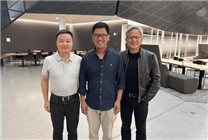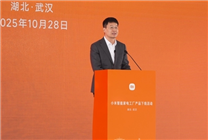Summary
- Leadership Structure: 36 key executives report directly to CEO Jensen Huang, emphasizing a flat management approach to enhance decision-making at NVIDIA.
- Strategic Focus: The leadership team is organized into seven core functional areas, with a significant emphasis on hardware and emerging AI technologies.
- Company Culture: NVIDIA maintains a high-pressure environment aimed at rapid innovation, contrasting sharply with more relaxed Silicon Valley practices.
The Leadership Landscape at NVIDIA
Direct Reports to Jensen Huang
At NVIDIA, a powerhouse in technology with a market cap in the trillions, only 36 individuals report directly to CEO Jensen Huang. This tight-knit group is segmented into seven key functional areas—strategy, hardware, software, AI, public relations, network, and an executive assistant. This structure exemplifies Huang’s commitment to streamlined communication and rapid decision-making.
Strategic Distribution of Roles
Among Huang’s direct reports, nine focus specifically on hardware—the bedrock of NVIDIA’s operations, accounting for about one-third of this elite team. This underscores the company’s legacy in hardware technology, particularly in GPUs, telecommunications, and complete system solutions like DGX.
Moreover, the increasing role of cutting-edge areas such as AI, embodied intelligence, and autonomous driving is noteworthy. Within this sphere, Huang has strategically positioned seven leaders, indicating a robust pivot towards what he terms "a billion-dollar market"—new opportunities that NVIDIA is eager to explore.
The Role of Public Relations
An interesting aspect of Huang’s leadership team is the inclusion of three executives dedicated to public relations. This is a stark contrast to figures like Elon Musk, who operate without a PR team. Huang’s approach is rooted in the necessity of engaging with a broad range of stakeholders—global enterprises, research institutions, government projects, and investors. Thus, building a structured external communication strategy is critical to maintaining NVIDIA’s status as an industry leader.
Key Personnel Insights
Let’s examine some pivotal figures from Huang’s core team:
-
Jonah Alben: Serving as the Senior Vice President of GPU Engineering, Alben has spent nearly three decades at NVIDIA and is hailed as the “soul of GPU architecture.” His profound understanding of GPU design has been instrumental in steering NVIDIA from standalone graphics into the AI domain.
-
Dwight Diercks: As NVIDIA’s Executive Vice President of Software Engineering, Diercks oversees core system software development. With a tenure spanning 31 years at the company, his experience is vital to managing NVIDIA’s extensive and rapidly growing software engineering team, which has risen to over 3,000 members.
-
Bill Dally: Holding the title of Chief Scientist, Dally’s insights in parallel computing laid the groundwork for NVIDIA’s R&D. His extensive academic background complements his role in propelling GPU evolution and AI hardware architecture.
- Wu Xinzhou: The only Chinese executive among Huang’s direct reports, Wu currently serves as Vice President of the Automotive Business. He is leading initiatives that drive NVIDIA’s entry into the automotive sector, leveraging his deep expertise from previous roles at Qualcomm and Xpeng Motors.
Management Structure and Culture
Huang’s management philosophy centers around a flat organizational structure. As of August, despite Musk’s comparatively lean reporting lines—19 at Tesla and five at xAI—Huang maintains his 36 direct reports. This model fosters effective communication flow and quick decision-making, crucial in a fast-paced technological landscape.
A highlight of Huang’s leadership is the focus on transparency in communication. He opts for group discussions over one-on-one meetings, ensuring that insights and information are readily accessible to all team members.
Changes and Challenges Ahead
While Huang’s flat management style has been effective, recent growth indicates a need for reevaluation. NVIDIA’s workforce surged from approximately 29,600 to 36,000 in just a year—its largest expansion in over 16 years. This rapid increase may strain the flat structure, prompting considerations for a more vertical approach to manage the diverse functions and noise generated from so much information.
Huang has demonstrated a unique management style—balancing rigorous expectations with a surprising degree of job security. His focus is straightforward: achieving results without resorting to layoffs, reinforcing a culture that may be more demanding than that of Silicon Valley’s typical work-life balance.
Conclusion
Jensen Huang’s leadership at NVIDIA paints a vivid picture of a tech titan navigating the complexities of a rapidly evolving industry. By balancing a flat management structure with a strong focus on innovation and rigorous expectations, NVIDIA continues to carve out its position as a frontrunner in technology. As the company prepares for further growth, how it adapts its leadership and organizational strategies will be crucial in maintaining its trajectory.







